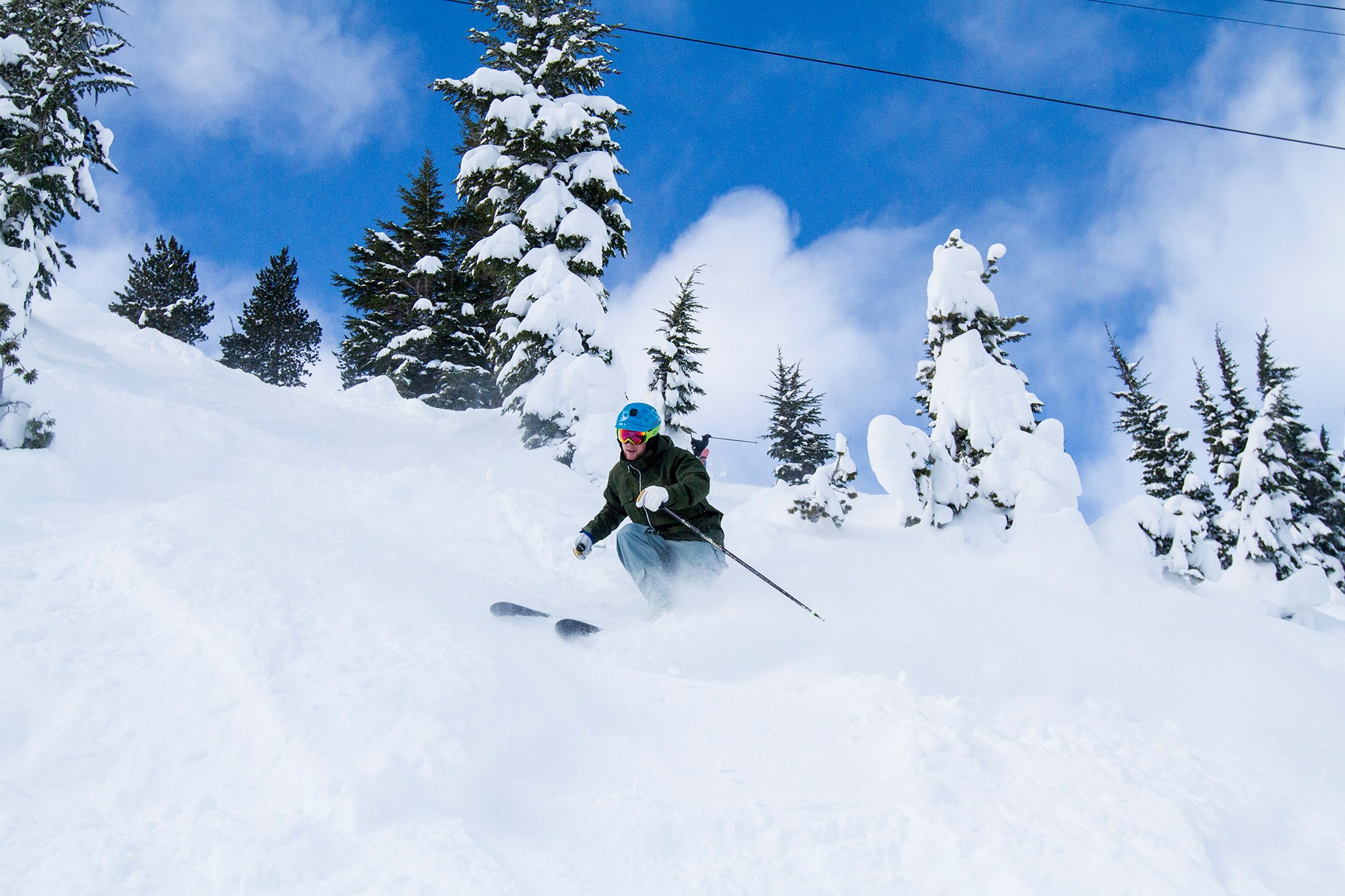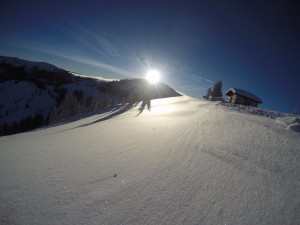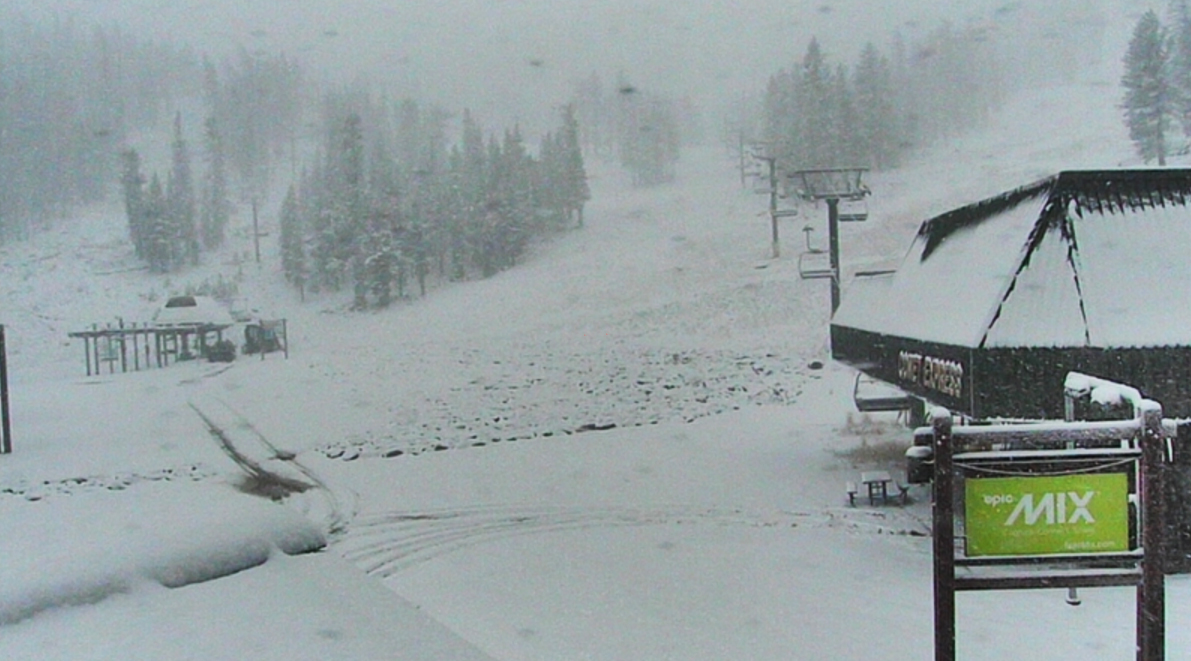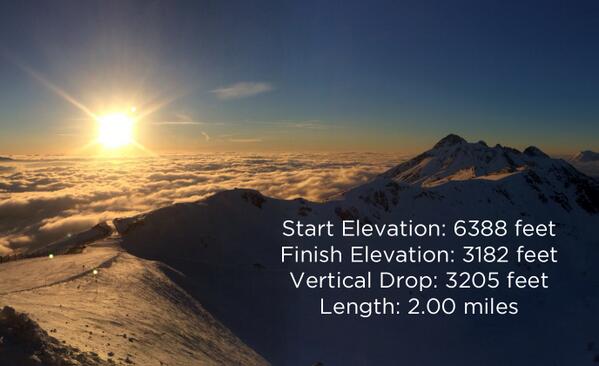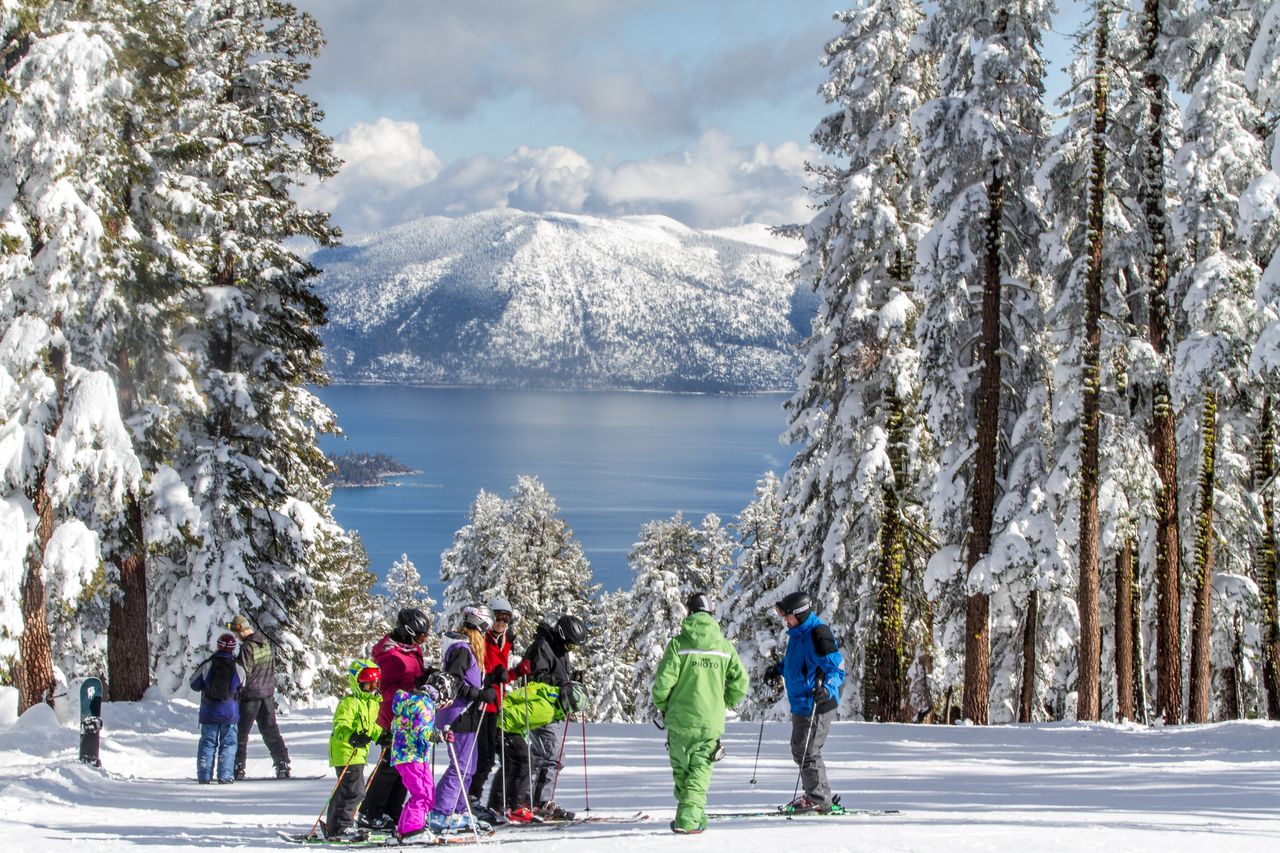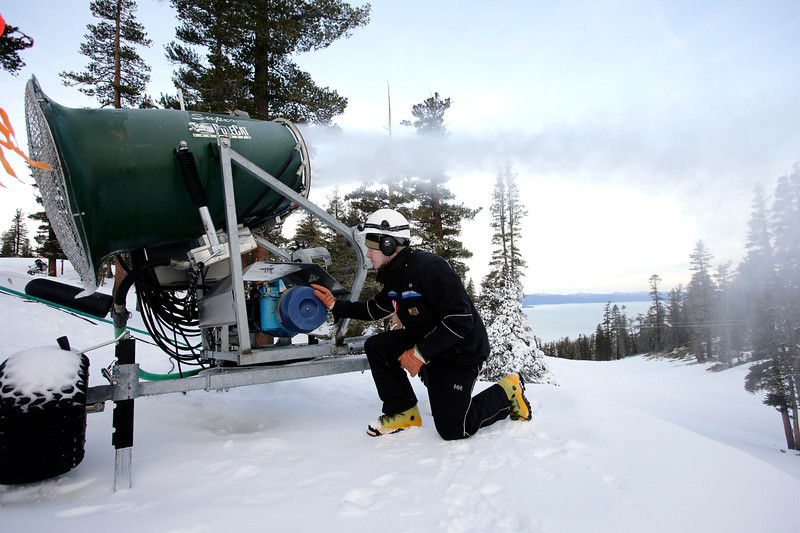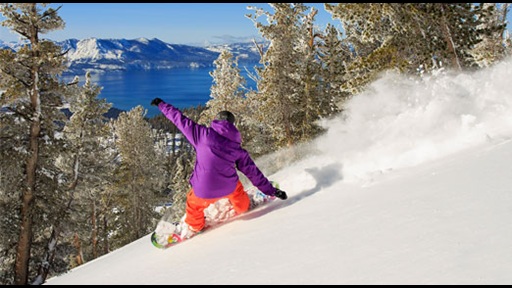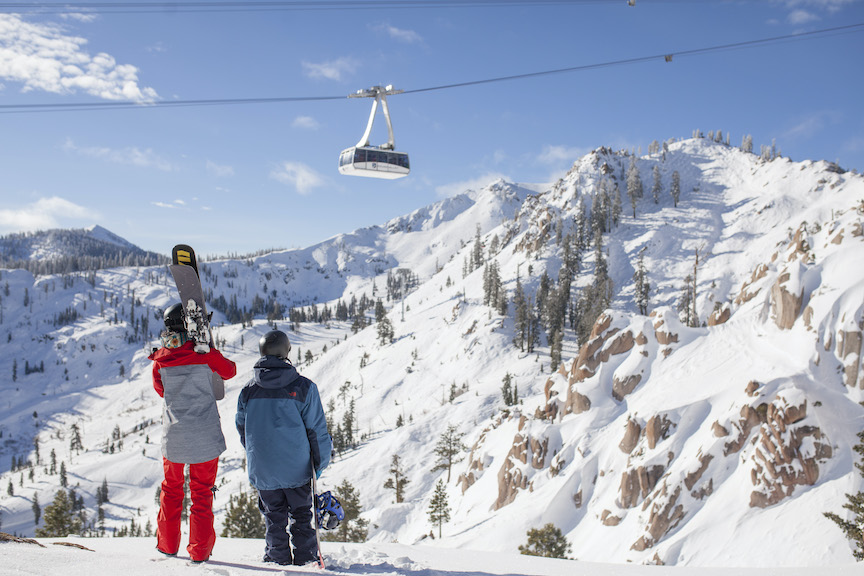
Squaw Valley-Alpine Meadows received more than 700 inches of snow last season — that’s 60 feet! The jury is still out when it comes to the amount of snowfall expected this winter. (Photo courtesy Ski California)
By Bob Goligoski
Last winter, a bonanza of skiers and snowboarders descended on the Northern Sierra ski resorts. Lured by epic snowfalls, 7,118,427 skier and rider visits were recorded at the 32 member resorts that belong to Ski California, the trade organization of the California and Nevada resorts.
That number of visits was the highest since the winter of 2010-11.
Some 719 inches, or about 60 feet, fell at Squaw Valley-Alpine Meadows. Down at the lower elevation lake level, Homewood got 600 inches of white gold.
Will there be a repeat performance this winter? The National Oceanic and Atmospheric Administration is being coy. Weather patterns are fickle right now so there is no clear sign of another great snow — or drought — season ahead.
Most Sierra resorts plan to open, conditions permitting, this month. Mammoth Mountain, for example, opened on Nov. 9. With its high base elevation, Mt. Rose got an early start and opened Oct. 25 with one lift and several trails.
Forecasts often do not seem to matter anyway, according to Mike Reitzell, president of Ski California.
“It has been pointed out,” he said, “that most of the forecasts for the Sierra were dead wrong last year. The snowfall was supposed to be below average but we ended up well above average.”
He noted two trends contributing to last season’s excellent numbers. For the first time, visitors arriving with season passes surpassed the number of guests buying daily tickets. The price of passes has come down so much — and daily ticket tabs have risen — that after three or four days on the snow at a particular resort, the rest of the days there are essentially free.
And after snowboarder visits tumbled earlier this decade, snowboarder guests were up for the fourth straight year and are now back at previous levels.
Many visitors to the Lake Tahoe area bed down in Truckee. In December, the 114-room Marriott Spring Hill Suites Hotel will open within walking distance of the historic downtown. This is the first new hotel to open there since the early 2000s.
So what’s new for skiers and riders at the resorts this winter?
Well, you won’t see a lot more new lifts and runs. Most of the resorts are pretty well filled out with lifts and trails already.
But you will see a number of new restaurants and bars, more snowmaking, fat tire bikes on the cross country trails at Kirkwood, a 13-foot mini-pipe at Sugar Bowl, snowshoe hikes at Tahoe Donner Cross Country and a dog race at the Tahoe Donner downhill area, among other attractions.
Reitzell explained that the resorts “are focusing on making sure that guests have a good experience regardless of the snowfall or weather.”
The only new chairlift opening this season in the Northern Sierra is a $10 million detachable, high-speed quad chair at Alpine Meadows called the Treeline Cirque chairlift. It promises to dramatically improve the skiing and riding experience at Squaw’s sister resort.
The lift will transport guests from the base area to Sherwood Ridge in just five minutes. Right now, to get up there it will take you two or three lifts. So this new lift, scheduled to open in December or January, will reduce your ride time by a whopping 35 to 40 minutes.
After four minutes of the ride, you can get off at a mid-station point and sample the mostly lower intermediate runs in Sherwood Bowl. Or you can ride for another minute to the top and ski the expert runs in several bowls including South Face or Big Bend or drop down into expert terrain on the front side.
About the only other new lift for the mountains this winter is being built at Sugar Bowl. This is a 240-foot covered surface lift designed to protect skiers and riders from the elements. It replaces the the old Flume surface lift.
Snowboarders likely will rush to Sugar Bowl this season to hop in the new 13-foot mini-pipe going up and a top-to-bottom terrain park with all new features including a 20-foot chubbie box and a 10-foot wallride.
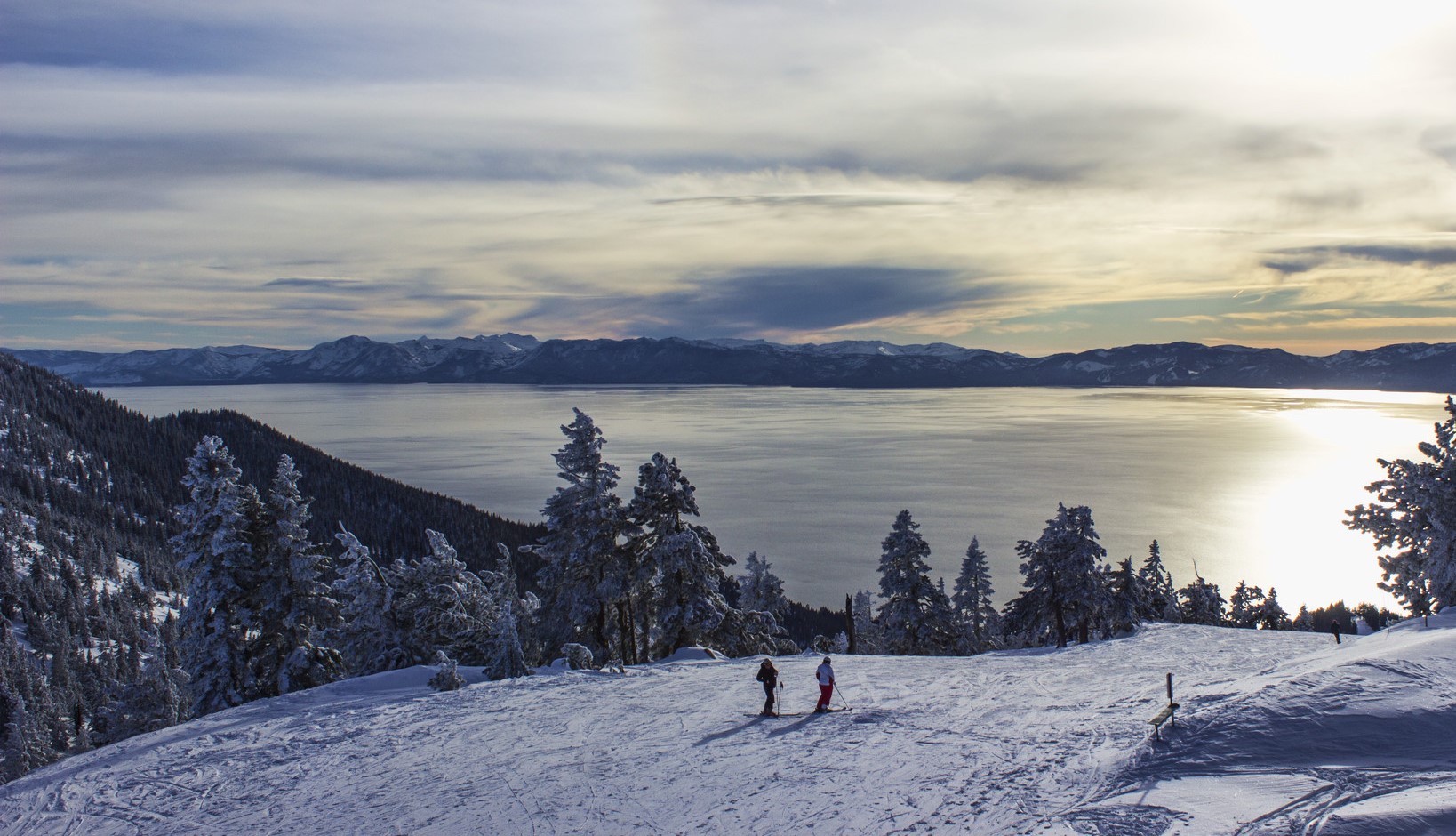
An expanded terrain park and improved snowmaking capabilities were among the off-season updates at Diamond Peak in the Lake Tahoe area. (Photo courtesy Ski California)
Here’s a look at several resorts which have made notable changes since last season:
Mammoth Mountain: A new bar-restaurant opens in Canyon Lodge with other new eateries to open also. Some $1.3 million was spent to expand the snowmaking network.
Boreal: A new on-mountain dining experience dubbed the Hub & Spoke will open. An RFID ticketing system is being installed, a women’s snowboard park camp will operate in April and Woodward Tahoe will offer a number of new programs for freestyle skiers and riders.
Diamond Peak: This Nevada resort has expanded its terrain park and beefed up its snowmaking system.
Heavenly: Look for events that allow you to ski and ride down the peak with the ski patrol after the lifts close.
Homewood: This lakeside resort has doubled its snowmaking capabilities and will for the first time offer backcountry and snowcat guide training to guests.
Kirkwood: The resort will have fat tire bikes on hand for guests to explore 37 miles of groomed trails at the Kirkwood Cross Country and Snowshoe Center.
Mt. Rose: An additional $1.5 million was poured into on-mountain improvements including more snowmaking and a new RFID ticketing system which means skiers can leave their tickets in their pockets when they go through the lift gates.
Northstar: A high-end Michael Mina Bourbon Pub Northstar will open. It’s a must-stop for foodies who can dine on truffle tater tots and cheddar brats wrapped in puff pastry.
Sierra-at-Tahoe: Get on the slopes faster this season with an RFID ticketing system.
Squaw Valley: The new Tram Car Bar opens on the Olympic House deck. This is a restored 1970s era Squaw Valley tram cabin. And the new Tremigo Mexican Kitchen and Tequila Bar will open near the lifts in the village.
And if you are in the Lake Tahoe area in mid-December, drop into the Tahoe Donner downhill area on Dec. 15 — customer appreciation day. Lift tickets are just $15.
.
Sie


